On a Sunday night in March in the historic centre of Mexico City, the Religiosas Ball is in full swing. Members of the city’s ballroom community give frenzied performances, one after the other, many dressed as religious icons, since religion is tonight’s theme. Nuns. Cardinals. A devil or two. A man with a bloodied face wearing a crown of thorns. A pumped crowd encircles the performers and cheers them on. The hi-hats of house music keep the beat. Gender-bending, provocative outfits, glittery makeup, voguing, singing. By any standard, the ball, which marks the nine-year anniversary of the House of Machos, is a beautiful celebration of queer culture.
The atmosphere becomes particularly electric when Any Funk, mother of the House of Machos, Mexico’s first ballroom house, gets on stage. Wearing coordinated black one-piece rompers, he and two other members of the house sing and dance to “Pepe” by JNS, almost an anthem for the House of Machos. After the performance, the special ball reserves an even more special moment for Any Funk. Mother Victoria Letal from the House of Apocalipstick gets on stage, and in the name of the community, crowns Any Funk as a legendary mother of the Mexican ballroom scene. This consecration represents a milestone in the life of a ballroom house’s mother, acknowledging her work and recognizing her role as a respected leader of the community. It is a huge achievement in the legacy Any Funk has been trying to build as an innovator and central figure in Mexico City’s ballroom scene.
“We worked so hard on this ball, to make sure the whole community would feel at home,” Any Funk says, “I didn’t expect this honour. I am speechless and thankful. Going from being a pioneer in my country, which I am very proud of, to being made a legend, makes me feel that despite the hardships of the past years, I am still alive and strong and I’m looking forward for my family and community.”
The thriving Mexico City ballroom community has boomed since the birth of the House of Machos, creating a safe space for countless LGBTQ+ people to express themselves, their uniqueness and their artistry, and to shape the future of queer culture with their own Mexican touch. Any Funk and the House of Machos have been a driving force of this queer cultural revolution, giving Mexico City a much-needed new space for underground queer expression.
The house has changed the lives of not only its members, who have found a supportive family, but also the audience members, who have seen the magic ballroom can create.
In the early 1970s, New York City’s Black and Latinx trans and queer people gave birth to ballroom culture. The underground queer subculture was aimed at creating a space of free expression and acceptance away from an oppressive society that discriminated against BIPOC and LGBTQ2S+ people. Ballroom directly challenged traditional gender roles and heteronormative identities with themed balls showcasing a variety of sometimes outrageous competitions in dance, modelling and performance. The scene became intertwined with voguing, a stylized dance invented in the 1980s. Introduced to the mainstream by Madonna’s “Vogue” in 1990, the culture has had a lasting impact, celebrated in the 1991 documentary Paris Is Burning, and referenced in TV shows like RuPaul’s Drag Race, Pose and Legendary.
Ballroom performers usually join houses, family-styled groups run by a mother (sometimes a father), who mentors her children and helps them find their own style within the family aesthetic. Because of this supportive structure, the idea of ballroom can be easily exported and adapted from its New York roots, allowing it to become a global phenomenon, including in Mexico City, a city of nine million people.
Anuar Alvarado Millán, aka, Any Funk, has been a true trailblazer of the city’s ballroom community. The 33-year-old’s story starts in a fashion that’s very traditional for many Mexican gay boys: he grew up in a Catholic family and attended a private religious boys’ school. Like in many Roman Catholic societies, homosexuality was perceived as a sin, and growing up in that environment, he internalized this negative view of his sexual identity, and struggled to come to terms with it. By age 16, the struggle had become unbearable. One day, while visiting Los Angeles, he came upon people who were voguing and was fascinated by the way they moved and expressed themselves. “I wanted to feel the same,” Any Funk tells me in an interview. “So I started talking to them, and they told me a lot about the culture. They told me to go to New York City if I wanted to learn more.”
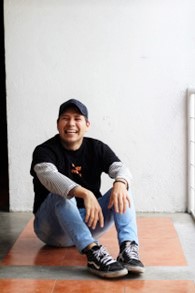
Credit: Jonathan Bertucchi
At age 16, Any Funk left Mexico for New York, telling his family he was going to study at the same school as his Californian cousin. “It was so hard. I didn’t know how to meet voguers,” he says, “I did not know the city, did not speak the language. I was 16, alone, lost in life and in the city.” Without money, he ended up sleeping in Central Park for three nights, until one day, he saw people dancing. “They were Latinx, so I could speak Spanish to them and I went up and asked if I could dance with them.” They also happened to be queer and welcomed Any Funk to their circle. He was eventually “adopted” by a throuple and moved into their home in Queens. One of the partners was Gabriel from Iconic House of Ninja, which was founded in New York in 1982.
“He was a voguer and taught me everything. He took me to balls, helped me sneak into the venues because I was too young,” says Any Funk, who spent a year in New York City, then bounced between there and Mexico for several months. “It was hard, because I kept lying to my parents, and I had no money.”
In 2009, Any Funk decided to stay in Mexico City for good and joined a dance family there that was dedicated to hip hop. But Any Funk wanted to help cultivate voguing in the Mexican capital. “I started teaching voguing and showing the hip-hop community that LGBTQ+ people exist,” says Any Funk. “Being the only openly queer person in a community is difficult, but I broke down the taboos. I got teased a lot. But when you fight in underground dance battles, you earn respect.”
Vogue moves weren’t all that he brought back from New York. With some close friends, he created his own house, the House of Machos, in 2013. “We started the family with five gay friends, but we quickly met more people who identified with us, who wanted to learn from us. We invited them to join, and we now have 83 members, all across the country. Well, I think …” Any Funk laughs, trying to remember the correct count.
The name was chosen as an ironic comment on a society where machismo is deemed as the main way to express masculinity. “We are the opposite of the meaning of macho—we are feminine, we are gay,” says Peter Ocampo, 28, who joined the House of Machos in 2020. “Machos want to take us down, to discriminate against us. So this name is a sarcastic celebration of our feminine side.”
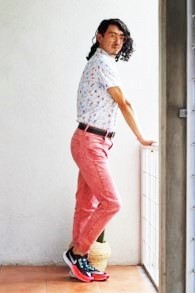
Credit: Jonathan Bertucchi
Ocampo says being part of ballroom culture and the House of Machos saved his life. He had a very rough time a couple of years ago, and was close to taking his own life. “The ballroom community helps me feel strong, supported and loved. This is my way to celebrate my femininity and my homosexuality,” he says, “Any Funk made me realize I wanted to be part of the family, and just being loved and celebrated for exactly who I am.”
Not wanting anybody else to go through the hard times he experienced, Ocampo keeps his home open to all the members of the family at all times. His specialty is as a waacking dancer, a street-dance style that came out of Los Angeles in the 1970s that’s related to voguing, but characterized by distinctive arm movements and posing. “Voguing is about models, while waacking is about actresses,” says Ocampo. “It is more dramatic. Mexican telenovelas are an inspiration to me.”
Arturo De La Cruz, 36, joined the house in 2021, discovering ballroom through his passion for photography.
“I am always looking for alternative spaces to showcase Mexico City’s nightlife and I ended up at a ball. All this was happening in Mexico and I had no idea,” says De La Cruz. “I found a community that celebrated their homosexuality, the possibility of being yourself, a place where you, as a person, regardless of how you act or dress, are going to be celebrated. That caught my attention.”
“We have different personas: one for work, one for family, one for friends. But in ballroom, you can be any of these personas and be accepted.”
While there is increasing freedom to be queer in Mexico, De La Cruz says the macho culture prevents queer folks from being themselves in a variety of spaces. “We have different personas: one for work, one for family, one for friends. But in ballroom, you can be any of these personas and be accepted. This is important, this is different,” he says.
De La Cruz appreciates ballroom not only for its artistry, but for its unique expression of Mexican culture. “It keeps you on your toes because there is always something surprising to see, something new in essence and style,” he says. “There is this syncretism, this blend of Mexican culture and how we interpret the world and voguing.” As a visual artist, he loves to witness the intersection of Mexican culture and ballroom. That might include references to Mexican popular entertainment like telenovelas and national celebrities.
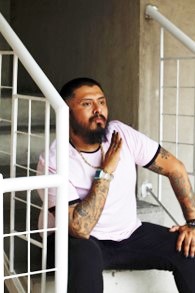
Credit: Jonathan Bertucchi
While other ballroom houses have joined Mexico City’s scene, the House of Machos has kept its own flavour as a liberal house, with its doors open to everyone, regardless of gender identity, sexual orientation, nationality, value system or participation in the balls. Most houses require their members to be performers and attend balls, but the House of Machos welcomes members from every walk of life, including math teachers, filmmakers, cis straight women, people who are not dancers and those do not participate in balls, such as De La Cruz.
“He does not dance, but he takes photos. Regardless, he would still be part of our family,” Any Funk says. “It doesn’t matter whether you dance or go to the balls. The point is: ‘Do you identify with us? Are you comfortable here?’”
If some Mexican houses may be reluctant to let foreigners into the community, fearing they might change the culture and tell them how things should be done, that’s not the case with the House of Machos. “It makes us very different from other Mexican houses, including international houses that have branches in Mexico,” says Any Funk. “The House of Ebony, for instance, is present in Mexico City, and has only a few members. All its Mexican [members need to be] trained in New York, and they need to have the same values. But I don’t care about that stuff, and as mother of the house, I accept people just the way they are.”
With the emergence of other Mexican houses, it was inevitable that a competitive ballroom scene would emerge. Members of the House of Machos, who started out performing on their own in gay bars, now have the opportunity to strut their stuff competitively. “We organized the first ball in 2015. It was very chaotic,” says Any Funk, laughing. “The judges did not really know anything about voguing, but this is where it all begins: a revolution in the Mexican community.”
We are all butch queens here. Many sexual dissidents here are inclined to be feminine, so ballroom has evolved consequently.”
Though the goals of the ballroom scene may be similar in Mexico City and in New York, the social circumstances can be very different. While New York’s ballroom scene was founded in the 1970s and ’80s, eras of overt homophobia and transphobia, Mexico City’s scene came of age much later, in the age of same-sex marriage and more societal openness to LGBTQ+ people. So, the scene can feel more relaxed. The government of Mexico City itself also tends to be quite progressive, though, of course, this does not reflect the situations experienced by Mexican LGBTQ+ people in other parts of the country.
While New York’s scene celebrates femininity and masculinity in various categories, Mexico City’s is decidedly focused on the feminine. “We are all butch queens here,” he laughs. “Many sexual dissidents here are inclined to be feminine, so ballroom has evolved consequently.”
Trans women of colour have played a large part in New York City, but Mexico City’s house founders have tended to be cis gay men. De La Cruz suggests the absence of trans people in the scene is particular to Mexico; their very existence is still taboo. “It is very recent that we even talk about them at all in Mexico,” he says. They are particularly affected by poverty and violence. In 2021, Mexico was deemed by human rights groups to be the second-most dangerous country, after Brazil, for transgender people.
The idea of the traditional family, sacred in Mexico, has been interestingly adapted by the ballroom houses, who playfully and lovingly reinterpret what it means to be family. Just as in a typical Mexican family, a ballroom family is strongly united around the mother figure and the connection between siblings is also very strong.
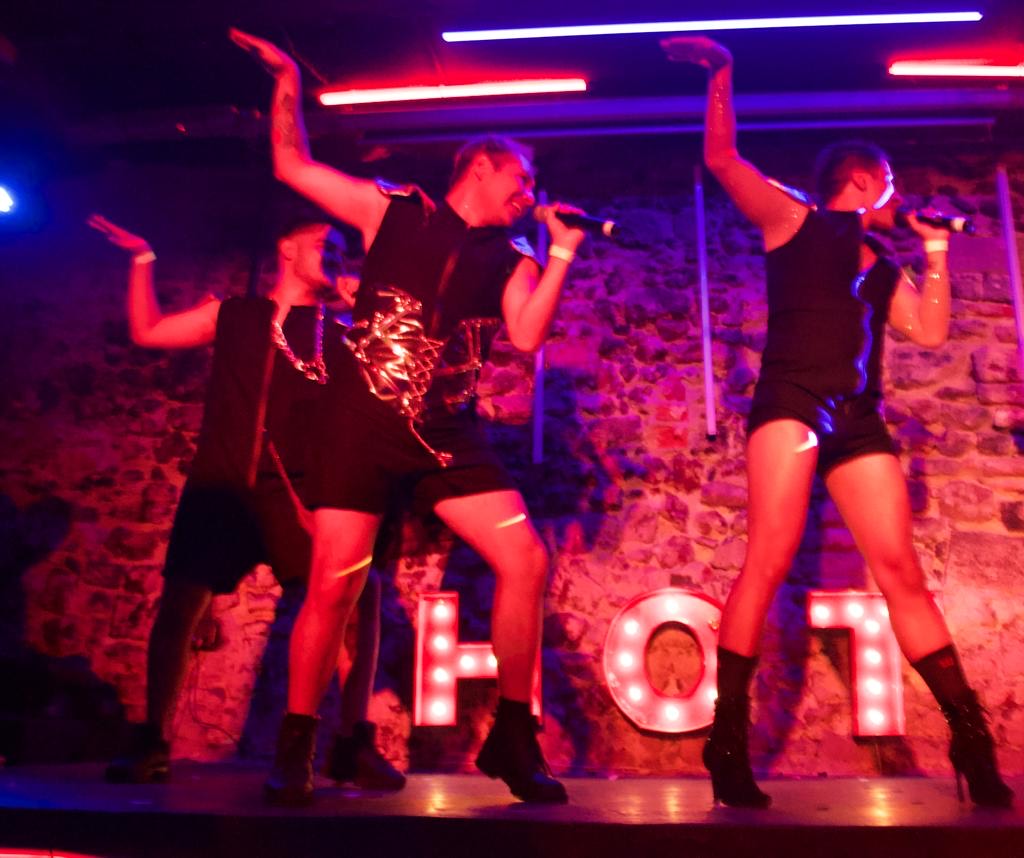
Credit: Arturo De La Cruz
“So, a person in the position of a mother, like Any Funk, just like in Mexican society, is a strong and central person, a person who both holds authority and the ability to embrace, give love and support to the members of her family,” says De La Cruz. “For better or worse, this is emotionally intense, and can result in tremendous disappointments. But I like a lot how we translate our Mexican values and redefine a specific identity.”
Because connecting with the best-fitting family is so essential, it took De La Cruz six years to choose which house to join. “Most of us queers in Mexico have always been like strange people at school and at home, but this community is a place for strange people. This is my place because I am different and it is okay to be different here,” he says.
For The House of Machos’ founder, voguing and his ballroom family represent his life, his history and the legacy he wants to leave behind. Any Funk wants to leave a glittery mark on the world and to pass on his knowledge about the community.
“I am a mother of the community, even if almost no one talks about me,” he laughs. “Many people learnt from me and I can see how far ballroom has grown with all the houses present today. I want people to never stop dreaming and to follow what they want to do.”
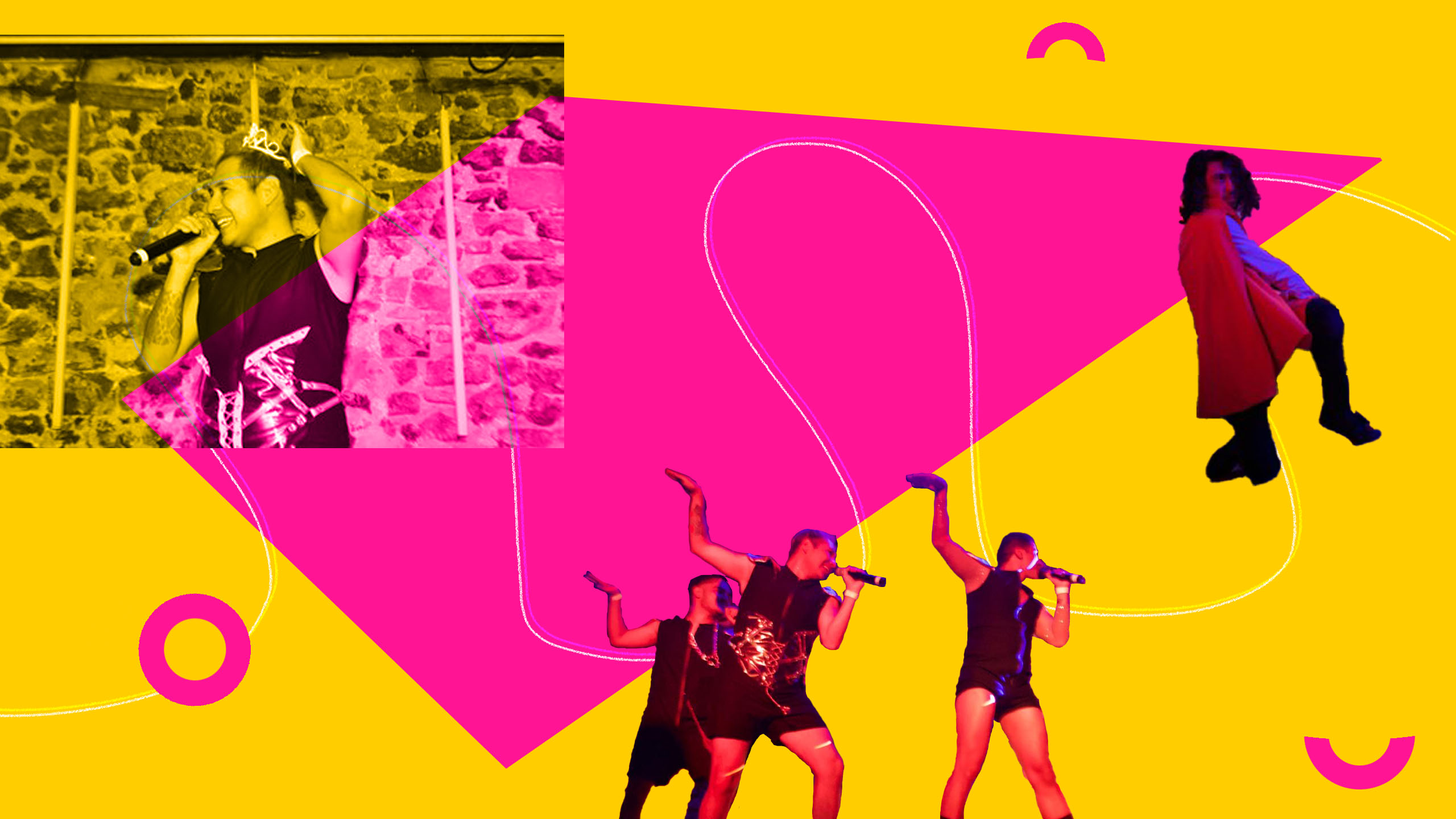

 Why you can trust Xtra
Why you can trust Xtra


